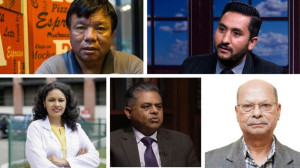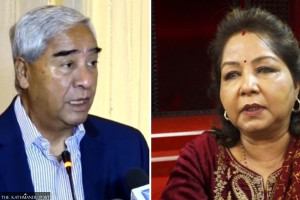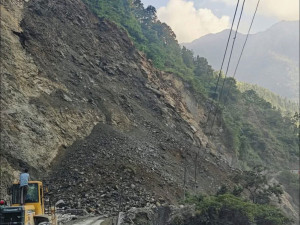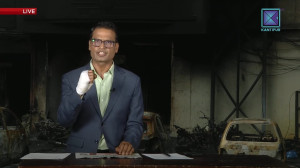National
Experts urge policy overhaul to address digital gap, inefficient workforce
Call for structural reform to unlock Nepal’s economic potential.
Post Report
Prominent economists and policymakers, while airing their views at the Kantipur Economic Summit 2025, have stressed the urgent need for addressing Nepal’s outdated fiscal and monetary frameworks, underinvestment in digital infrastructure, and the inefficiency of its workforce, even at the graduate level.
During the second session titled “Budget: Beyond numbers, seeking meaning”, researcher Amrita Sharma criticised the poor quality of the country’s human capital despite rising graduation rates in digital and technical fields.
“Each year, over 17,000 graduates enter the digital sector in Nepal,” said Sharma. “But if we assess their capabilities, most fall short. Around 85 percent of them require six to nine months of training from employers, and even then, many leave the country shortly after.”
She warned that without substantial investment in foundational digital infrastructure and skills development, Nepal risks missing out on the global shift towards digital transformation.
“Over 70 percent of businesses globally are expected to go digital in the next decade. Nepal has potential in IT, but our digital practices are misdirected, and resources are being wasted,” Sharma added.
Former finance secretary Rameshwore Khanal called for a fundamental rethinking of Nepal’s fixed exchange rate policy with the Indian rupee. He said the peg is stifling domestic production and eroding Nepal’s competitiveness.
“We’ve voluntarily aligned with India, but if we want to build competitiveness and move to a high-growth path, we must reconsider this peg,” Khanal said. “Yes, there are risks to delinking, but we are already experiencing the consequences—our farmers and producers are being hurt by cheaper Indian imports.”
He added that the policy has led to structural constraints, making Nepal’s economy less resilient and leaving it “trapped at the bottom rung of the development ladder.”
Khanal, who chaired the reform commission, praised the government for promptly publishing the commission’s report and integrating its language into national policy documents—something he described as a “remarkable departure” from past practice.
“In the past, reports were shelved. This time, the government acted quickly. But implementing the recommendations will require courage,” he said. “Back in 2000, then-finance minister Ram Sharan Mahat removed 222 projects based on our recommendations. That’s the kind of resolve needed today.”
Finance Secretary Ghanshyam Upadhyaya stated that the upcoming budget would incorporate key recommendations from the High-Level Economic Reform Commission, aiming to restructure public investment and enhance private sector productivity.
He acknowledged issues with underutilised capital expenditure due to poorly prepared and scattered projects and noted that the government has already amended public procurement regulations, with procurement laws also under review.
“We’re working to address land acquisition and forest clearance bottlenecks through targeted budget and policy measures,” he said. “Over 26 laws have already been amended to encourage private investment.”
Upadhyaya added that going forward, priority would be given to capital spending that directly supports productive capacity in the private sector.
Chandra Dhakal, president of the Federation of Nepalese Chambers of Commerce and Industry (FNCCI), echoed the need for action over rhetoric. He said private sector suggestions are often included in the budget but rarely implemented with urgency.
“Reforms proposed by the commission align with our longstanding demands. Many laws have been amended based on our input. But unless these changes are executed in real terms, we won’t see results,” Dhakal stated.
He emphasised that increasing revenue sources is a government priority, but warned that the private sector must be treated with dignity and trust if Nepal is to unlock the desired economic outcomes.
The Kantipur Media Group organised the event as the government is preparing to prepare its annual budget for the upcoming fiscal year that will be unveiled in the federal parliament on May 29.




 17.87°C Kathmandu
17.87°C Kathmandu












